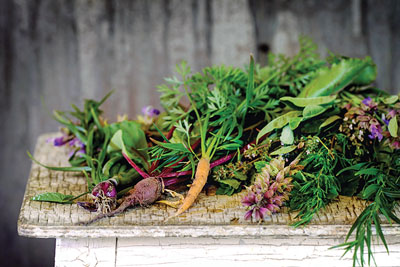Less Waste, More Taste

By Margo Graf
As time goes on, people become more and resources become less. America, as well as many countries, are running out of farmable land, rainforest, clean water, and access to organic GMO-free foods. Therefore, it is our duty as consumers to buy products that have been sustainably made with low environmental impact. It is also our responsibility as beings of this earth to keep our planet in pristine condition. Seeing as we depend on earth–for literally everything–it makes sense to apply the Golden Rule.
We all know to recycle, avoid unnecessary plastic, and to stick to our lists–only buy what we need. But there are actually many ways in which people unknowingly waste food. It was estimated that 133 billion pounds of American food is wasted each year. This forgotten food is the largest component of solid waste in our dumps. When it rots, it emits the ozone destroying methane. The average family throws out around $1,500 of food each year. An extra $1,500 makes a big difference when it comes to family expenses. So, in order to help you save money (and time) and to lower the impact on our earth, I have prepared a few solutions.
But first I want to talk about some misconceptions. Many people see a bruise or strangely shaped fruit as bad. How could we expect every single fruit to turn out as perfectly as the picture on the carton? They are only human fruit, after all! Once, while waiting in line, the woman in front of me tried to get a discount for a banana because it was “over ripe.” When in fact, it would not become ripe for a few days. She based her claim off of a few brown spots around the peel. Although I did not interfere with her demands, what I wanted to say was, “Excuse me ma’am, bananas actually have more antioxidants and are easier to digest when they are browning (ripe). The color is just a natural process of starch turning into sugars. That is why brown bananas are best for baking–they are sweeter!”
This is true for many foods. Just because they are a bit wilted, discolored, or soft does not necessarily qualify them as rotten. No need to throw them in the compost just yet. Even certain items past their expiration dates last much longer than declared. There is a pretty reliable check for this: smell it, squeeze it, taste it, use your judgement. “Sell By” and “Best By” dates are guidelines. As most foods are picked, packaged, transported, shelved, and then bought–a “Sell By” date can really be a ballpark figure. Seasonal factors, weather and transportation conditions, handling, and the variety of the food all impact how well a certain batch of blueberries will hold up over the few weeks before they make it to your pie. The packager can only assume the average time for the average product to last. Sure, they are pretty good at getting this correct, but it is kind of an educated guess, right?
Simply, if you want something to last longer put it in the fridge. But not all foods need to be refrigerated. Vinegar based foods such as mustard, mayonnaise, and ketchup are just fine in the cupboard. Eggs also do not need to be refrigerated, although they will last longer in the cold. Eggs are not so easy for the old sniff and taste trick. If you want to know if they are still good, put them in a bowl of water. If they sink, they are fine. If they float, it is time to chuck them. Pores in the shells fill with air overtime causing them to float. When they get to that point, it is too late. If they lift a bit on one side, they are still okay, but will not last much longer.
Before tossing out flimsy veggies, try this trick for saving your food, money, and earth. (The better we can make our supplies last, the less toll on the land.) Soft carrots, broccoli, and greens in general, can be resurrected with a bowl of ice water. Interestingly enough, placing them for a short time in cold water will diminish their droop–and voila–they are ready for dinner.
Wilted greens are easy to pick out. They become darker and smell funny, but actually they can be sautéed with no problem (to an extent). This goes for lettuce, too. Many Asian cuisines do this for stir-fry, but grilled lettuce is also delicious.
The coldest part of the fridge is the bottom, so store foods that are most perishable there. Meats, poultry, and fish have a greater risk of going bad (and dripping) when placed at the top of the fridge. Bread can also be stored in the fridge to make it last longer. Put it in the freezer if you really want to make it last. If mold forms on bread, it needs to be tossed. If mold forms on hard cheese (Parmesan, cheddar) or hard veggies (carrots, bell peppers, cabbage) just cut off the surrounding area and continue cooking. When soft foods develop mold just compost them. Potatoes that have a green tint are actually a bit toxic–do not eat. The best way to make veggies last is keeping them in an airtight lid in the fridge.
Food does not have to look picture perfect to be edible and delicious. When in doubt, investigate with smell, look, taste, and your gut feeling. Small efforts can make a big difference, both environmentally and financially. So, Bon Appetite to sustainable cooking!

